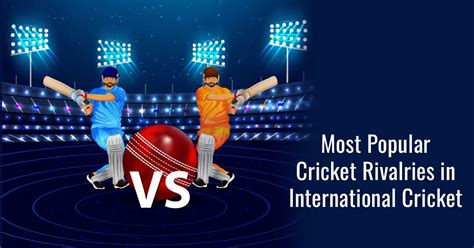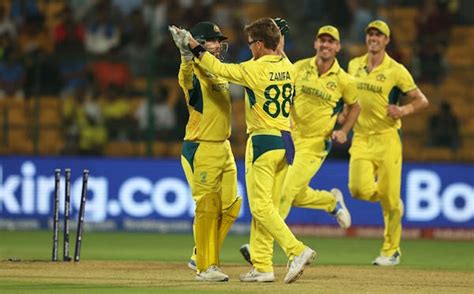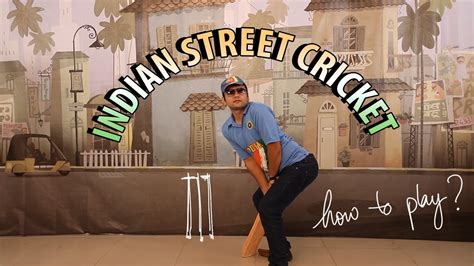Explore the historical context, key players, and cultural significance of famous cricket rivalries, along with memorable matches and future prospects for passionate fans.Cricket is more than just a sport; it’s a cultural phenomenon that unites and divides fans across the globe. Among the myriad of matchups, famous cricket rivalries stand out, not only for their nail-biting action but also for the rich history, intense emotions, and unforgettable moments they create. Whether it’s the fierce competition between India and Pakistan or the storied battles of Australia versus England in the Ashes series, these rivalries captivate enthusiasts and athletes alike. In this article, we delve into the historical context of these iconic matchups, explore the key players who have shaped their legacy, and reflect on the cultural significance they hold in the hearts of millions. Join us as we examine what makes these rivalries so special and their impact on fans and the future of the sport.
Historical Context Of Famous Cricket Rivalries
The fabric of famous cricket rivalries is woven with events that have transcended the sport itself. Understanding the historical context surrounding these rivalries provides insight into the passionate and intense atmospheres that characterize such matches. These rivalries didn’t arise in a vacuum; they are shaped by a culmination of historical, political, and cultural factors.
One of the most notable historical contexts lies in the rivalry between England and Australia, known as the Ashes. This rivalry has its roots in the late 19th century, stemming from Australia’s victory in 1882, which led to the satirical obituary that proclaimed the death of English cricket, stating that English cricket died, and the body will be cremated, to which the ashes would be sent to Australia. This moment marked the beginning of one of the most storied rivalries in sports history.
Similarly, the rivalry between India and Pakistan in cricket is deeply ingrained in the political climate following the partition of British India in 1947. The emotions surrounding this rivalry are often heightened by historical grievances, making matches between these two teams not just about cricket, but also national pride. Each encounter on the field is viewed through the prism of this historical context, leading to electrifying atmospheres and deeply invested fan bases.
Beyond just these examples, various other rivalries exist due to colonial histories, cultural similarities, and regional competition. The history of famous cricket rivalries reflects the evolution of the game, social dynamics, and the impact of cricket as a unifying force during times of unrest.
| Rivalry | Historical Context |
|---|---|
| Australia vs England | Originated with the 1882 Ashes match; a battle over cricket supremacy. |
| India vs Pakistan | Reflected tensions from the 1947 partition; cricket as a symbol of national identity. |
| South Africa vs Australia | A rivalry built during the anti-apartheid era, showcasing sportsmanship and resilience. |
The historical context of famous cricket rivalries plays a significant role in shaping the dynamics of the matches that fans celebrate. It is this backdrop that enhances not just the competition on the field, but also the stories, emotions, and narratives that capture the hearts of millions around the world.
Key Players Who Shaped Iconic Cricket Rivalries
Throughout the history of cricket, several players have become synonymous with famous cricket rivalries, their performances and personalities elevating these contests to legendary status. These athletes often become the face of the rivalry, leaving a lasting impact on fans and the sport itself.
One of the most celebrated rivalries is between India and Pakistan, where players like Sachin Tendulkar and Wasim Akram have been pivotal. Tendulkar’s graceful batting and Akram’s fiery bowling not only defined their respective careers but also intensified the competition between the two nations. Each encounter brought heightened anticipation, with these icons often playing critical roles in shaping the outcomes of the matches.
Another significant rivalry exists between Australia and England, epitomized by the Ashes series. Key players like Sir Donald Bradman and Sir Ian Botham have shaped this fierce competition. Bradman’s exceptional batting prowess set records that stand to this day, while Botham’s all-round abilities, combined with his knack for performing in clutch moments, became pivotal in turning matches in England’s favor.
In the context of the West Indies, the legendary duo of Sir Vivian Richards and Malcolm Marshall personified the Caribbean dominance in the 1970s and 80s. Richards, with his aggressive batting style, and Marshall, with his devastating bowling, contributed to a rivalry against teams like England and Australia that was marked with thrilling encounters and unforgettable moments.
Beyond individual performances, these key players often become heroes or icons within their countries, further inflating the sentiment surrounding famous cricket rivalries. Their rivalries often cross generations, as fans build lifelong connections to the players who have defined their nation’s cricketing narratives.
As new talents emerge, they carry the legacy of these legendary figures, promising to keep the flame of rivalry alive for future cricket enthusiasts.
The Impact Of Famous Cricket Rivalries On Fans
Famous cricket rivalries evoke intense passion and loyalty among fans, shaping not only their dedication but also their overall experience of the sport. These rivalries, such as those between India and Pakistan, Australia and England, and the West Indies and England, have created a unique culture around cricket that extends beyond the matches themselves.
Firstly, the emotional investment fans have in these rivalries is profound. The stakes of each match extend beyond mere statistics; fans often view these encounters as personal. A victory against a long-standing rival can boost national pride, while a defeat might evoke feelings of disappointment and frustration. This emotional rollercoaster strengthens community ties, as fans come together to support their teams, displaying colors, chanting, and engaging in lively discussions.
Moreover, the social impact of famous cricket rivalries is significant. These matches draw large crowds, both in stadiums and through viewership on television and online streaming platforms. The atmosphere at these matches is electric, with palpable tension, excitement, and camaraderie among the spectators. Fans often make it a point to gather with family and friends to watch these pivotal games, reinforcing relationships and creating shared memories that last a lifetime.
Additionally, rivalries often inspire fan art, merchandise, and celebrations that reflect national identity. Fans express their loyalty through creative means, from designing flags to crafting elaborate chants, further deepening their engagement with the sport. This creative expression fuels the passion surrounding these matches, ensuring that they are more than just sporting events but community celebrations of identity and pride.
The narratives and stories that arise from these rivalries contribute significantly to the cricketing folklore. Iconic moments and memorable encounters create legends that pass down through generations. Young fans grow up hearing stories of past confrontations, igniting their passion for the sport and ensuring that the legacy of famous cricket rivalries continues to thrive.
Memorable Matches That Highlighted These Rivalries
Throughout the history of cricket, there have been numerous matches that exemplify the intense nature of famous cricket rivalries. These games not only captivated audiences but also displayed the skill, determination, and spirit of the teams involved. Here are some of the most memorable encounters that have defined these rivalries:
- India vs. Pakistan – 2011 World Cup Semi-Final: Held at Mohali, this match was more than just a cricket game; it was a spectacle watched by millions. The atmosphere was electric, and the stakes were high as India triumphed over their arch-rivals, reaching the final.
- Australia vs. England – The Ashes, 2005 Edgbaston Test: Regarded as one of the greatest Test matches, England secured a nail-biting victory by just two runs, igniting immense pride in their camp and strengthening this historic rivalry.
- South Africa vs. Australia – 1998 Test Series: Marked by a fierce competition, the series witnessed a phenomenal performance by Shane Warne, solidifying the intense rivalry between these two cricketing nations as South Africa struggled to cope with Australia’s skill and dominance.
- West Indies vs. England – 1976 Test at Kensington Oval: This match is remembered for the West Indies’ incredible rise in cricket, showcasing their raw talent and power, culminating in a solid victory that further fanned the flames of this historical rivalry.
- India vs. Australia – 2008 Sydney Test: This match was infamous for its contentious decisions and on-field altercations, which only deepened the rivalry. Despite controversies, it highlighted the resilience and competitive spirit of both teams.
These matches reflect the essence of famous cricket rivalries, where emotions run high, and the outcomes are never taken for granted. The legendary performances and unforgettable moments from these encounters continue to resonate with fans, fueling the passion for cricket around the globe.
Cultural Significance Of Famous Cricket Rivalries
The famous cricket rivalries extend beyond mere competition on the field; they embody the spirit and passion of the nations they represent. These rivalries are often steeped in history, reflecting cultural narratives that resonate deeply with fans. For instance, the long-standing rivalry between India and Pakistan not only showcases exceptional cricketing talent but also serves as a microcosm of the political and social dynamics that influence the subcontinent.
The impact of these rivalries can be observed in various facets of society. They foster a sense of unity and identity among fans, with matches often transforming into communal celebrations. During significant fixtures, entire cities come alive with colors and chants that reflect national pride and allegiance.
Cultural rituals associated with these matches are noteworthy. In many countries, it’s common for families and friends to gather around televisions, create elaborate meal spreads, and engage in friendly banter that highlights local traditions. Cricket legends become part of folklore, with their feats immortalized in songs, art, and literature, further enhancing the cultural fabric attached to these rivalries.
The passion surrounding famous cricket rivalries also plays a pivotal role in the evolution of cricket as a global sport. Events such as the Ashes or the Border-Gavaskar Trophy not only draw colossal audiences but also attract sponsorships and media coverage that propel cricket’s popularity across borders. This, in turn, contributes to a richer exchange of cultures and sportsmanship, further embedding the sport into the societal psyche.
The cultural significance of famous cricket rivalries lies in their ability to transcend the sport itself, weaving a complex tapestry of national pride, historical narratives, and communal bonding, thus making these rivalries indispensable to the heritage and identity of cricket-loving nations.
Future Prospects For Notable Cricket Rivalries
The landscape of cricket is continuously evolving, and with it, the potential for new and thrilling famous cricket rivalries emerges. Several factors contribute to the future prospects of these rivalries, including player development, technological advancements, and changes in the administrative structures of cricket boards around the world.
As younger players rise through the ranks, we can expect rivalries that were once dominated by legends to see new challengers stepping up. For instance, nations like Afghanistan and Ireland are beginning to make their mark in international cricket, possibly setting the stage for rivalries that could captivate audiences in the coming years. The increasing competitiveness of these teams adds a fresh dynamic to traditional rivalries.
Moreover, advancements in broadcasting and digital media are likely to enhance the fan experience, thereby intensifying the following of famous cricket rivalries. As fans become more engaged through social media, live streaming, and interactive content, the narrative surrounding these clashes will be richer, fostering a community that is both informed and passionate.
| Rivalry | Future Outlook |
|---|---|
| India vs. Pakistan | Continued high stakes, with rising youth engage. |
| Australia vs. England | Tradition remains strong; great anticipation for future Ashes series. |
| South Africa vs. Australia | New talents emerging; intense competitions expected. |
| India vs. Australia | Increasing competitiveness; invigorated by past encounters. |
In addition, the introduction of global tournaments, such as the ICC T20 World Cup and various franchise leagues, has a significant role in consolidating famous cricket rivalries. The format allows players from different nationalities to interact and compete against each other frequently, heightening tensions and rivalries that are created off the field, paving the way for exciting on-field matchups.
Overall, the future of famous cricket rivalries looks promising, with the potential for both established and burgeoning teams to create unforgettable moments that will be cherished by fans for generations to come.
Frequently Asked Questions
What are some of the most famous cricket rivalries?
Some of the most famous cricket rivalries include India vs Pakistan, Australia vs England (The Ashes), and India vs Australia.
What factors contribute to the intensity of cricket rivalries?
Factors contributing to the intensity of cricket rivalries include historical context, national pride, memorable matches, and passionate fan bases.
How does historical context play a role in cricket rivalries?
Historical context adds depth to rivalries, as events from the past, such as political tensions or significant matches, can influence current perceptions and attitudes between teams.
Why are India vs Pakistan matches particularly significant?
India vs Pakistan matches are significant due to their historical and political background, which adds a layer of excitement and tension among players and fans alike.
What impact do rivalries have on players’ performance?
Rivalries can heighten players’ performances due to increased motivation and pressure, often leading them to excel in high-stakes situations.
How do fans contribute to the atmosphere of cricket rivalries?
Fans play a crucial role by passionately supporting their teams, creating an electric atmosphere during matches, and adding to the rivalry’s intensity.
What are some memorable moments in cricket rivalries?
Memorable moments include historic last-over finishes, dramatic comebacks, and legendary performances that are often celebrated and recounted in cricket history.









